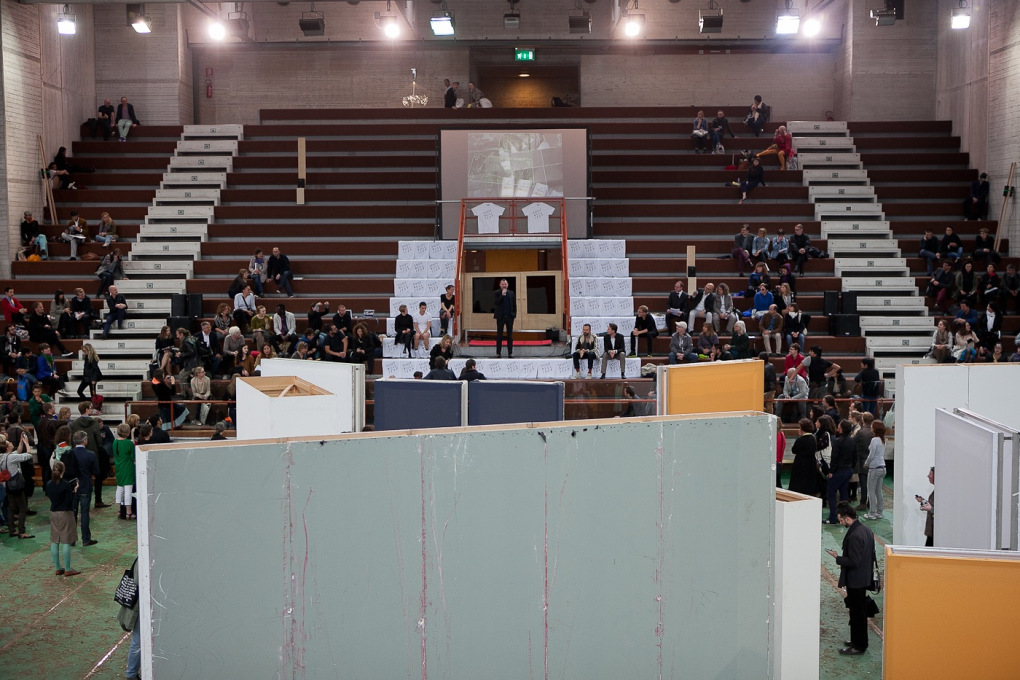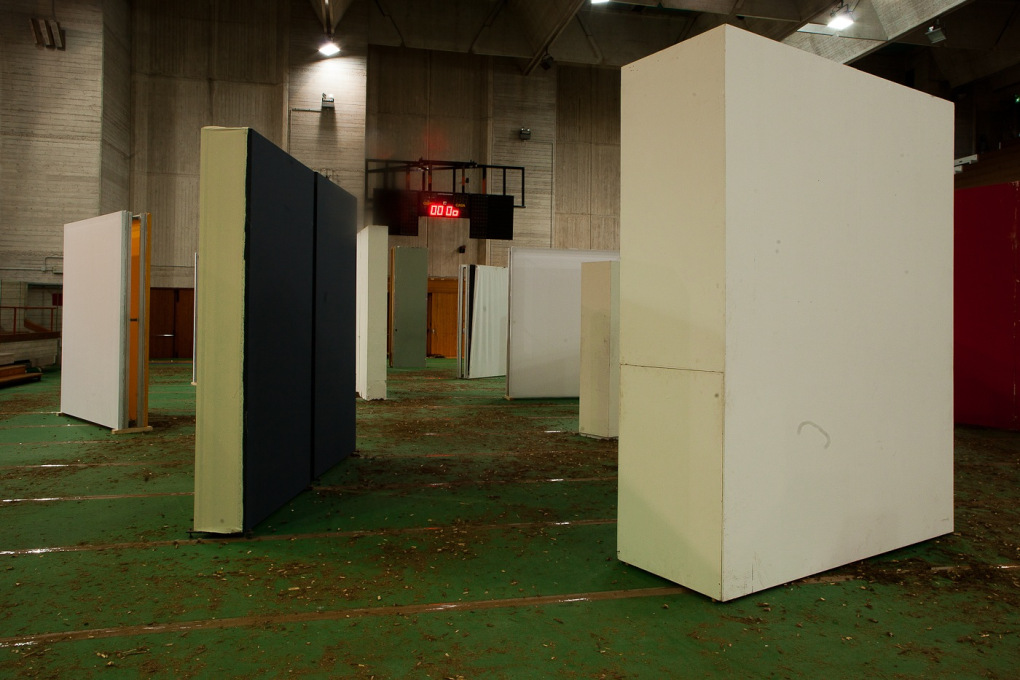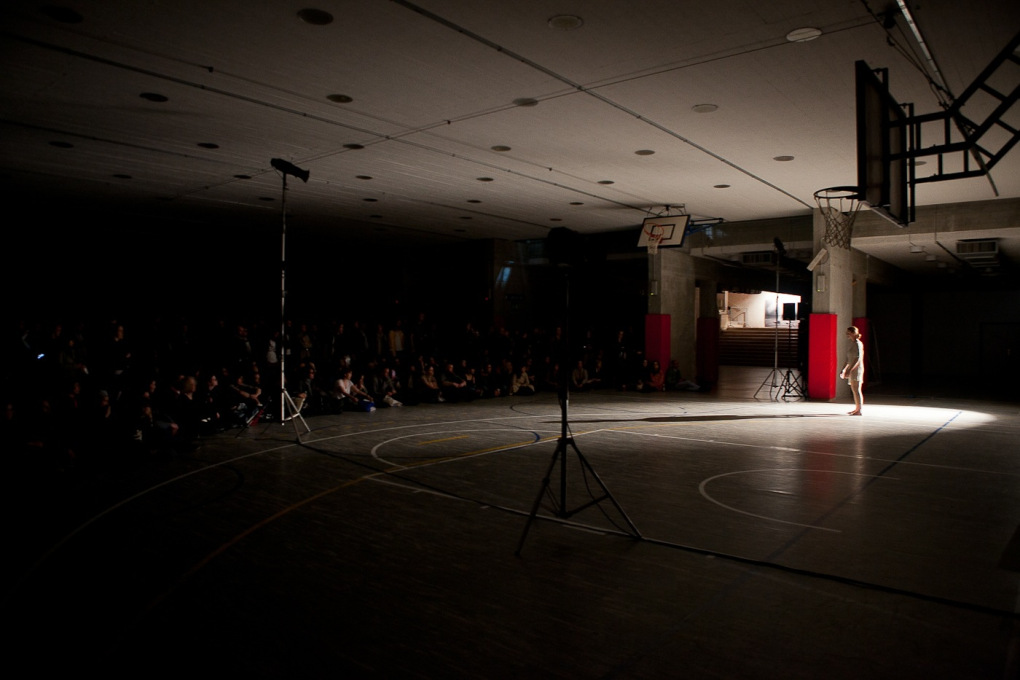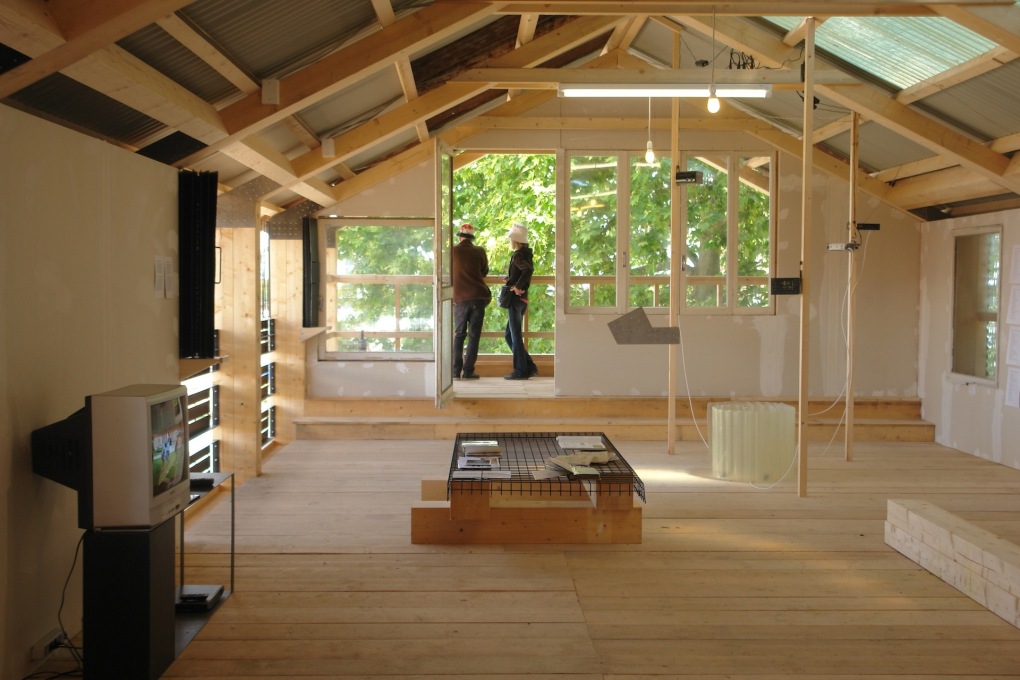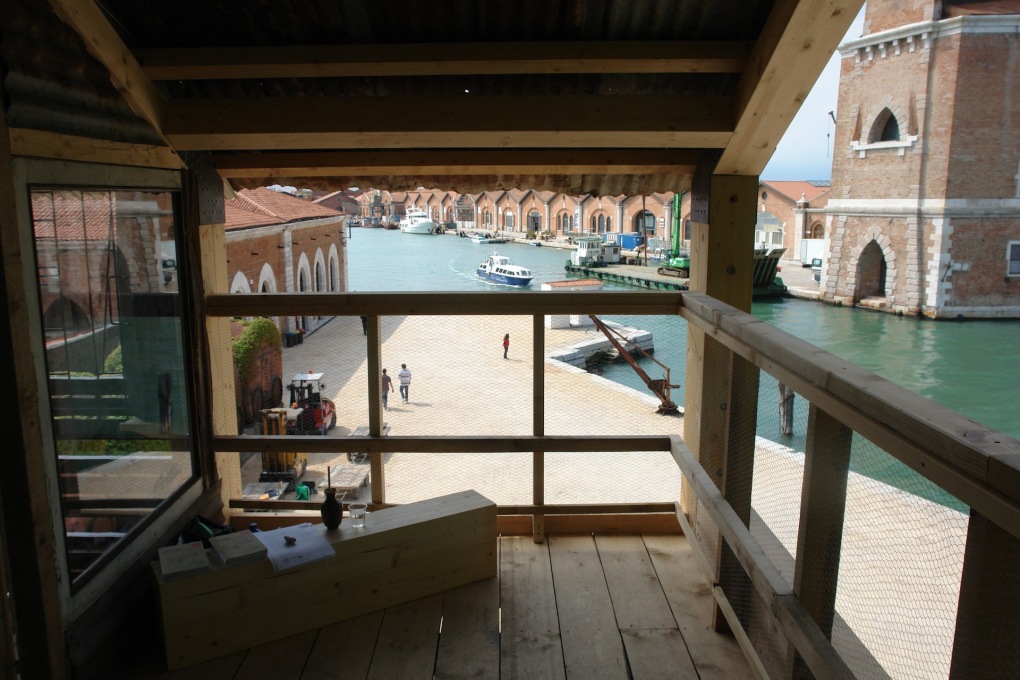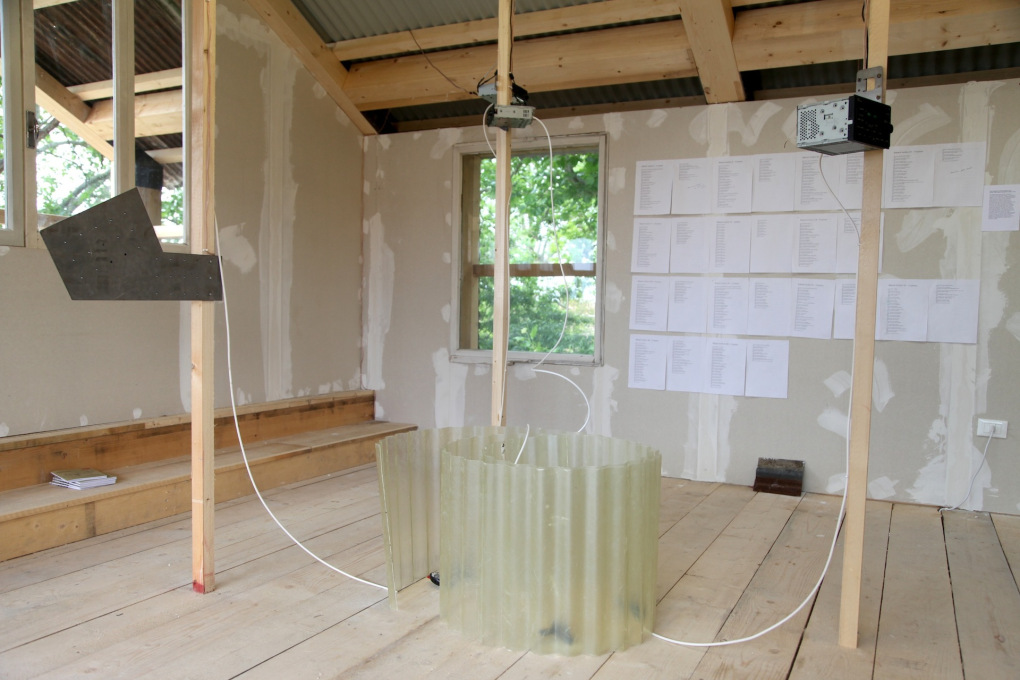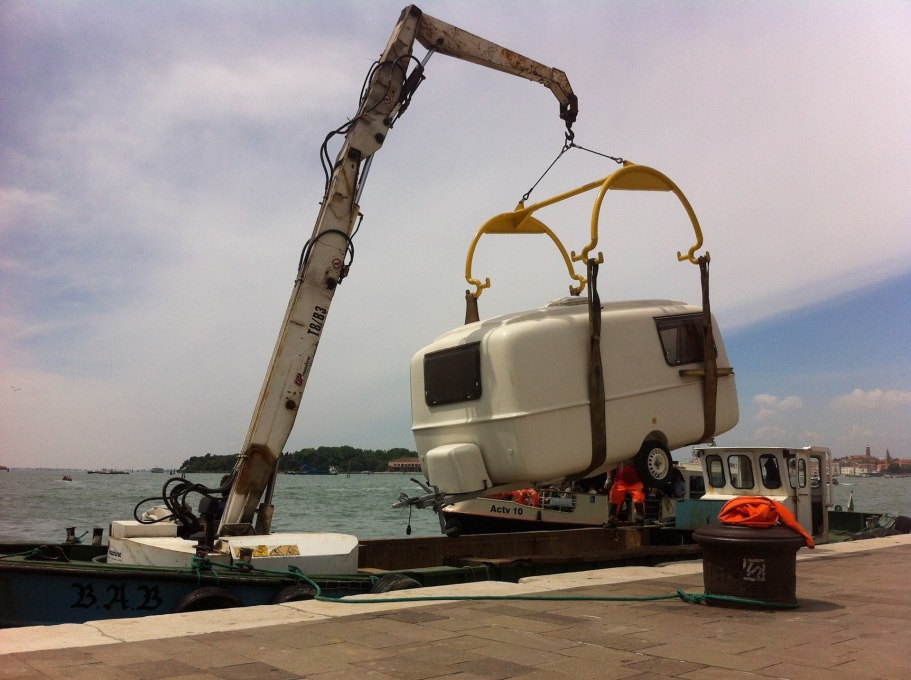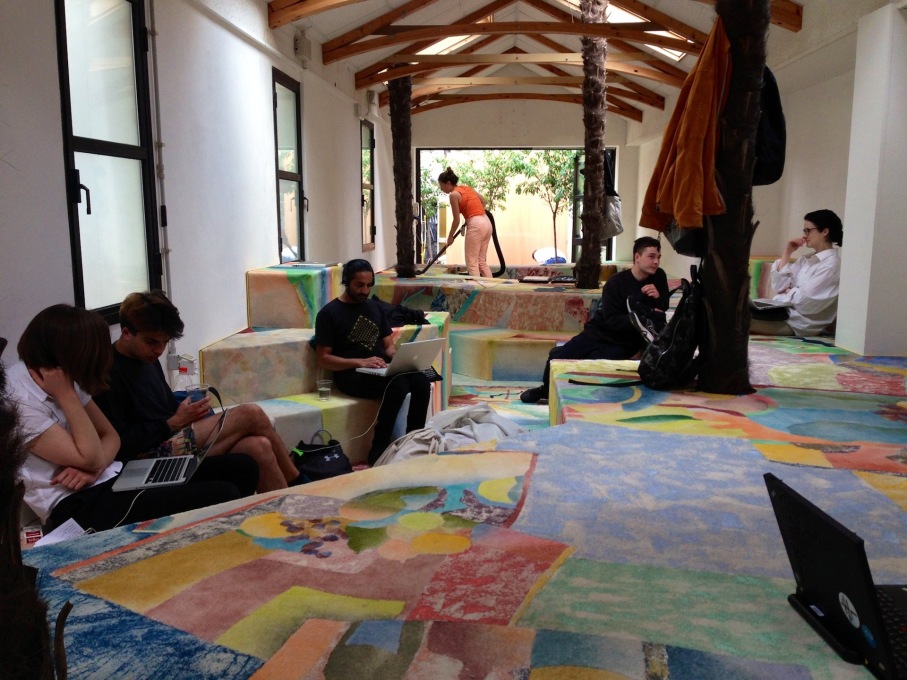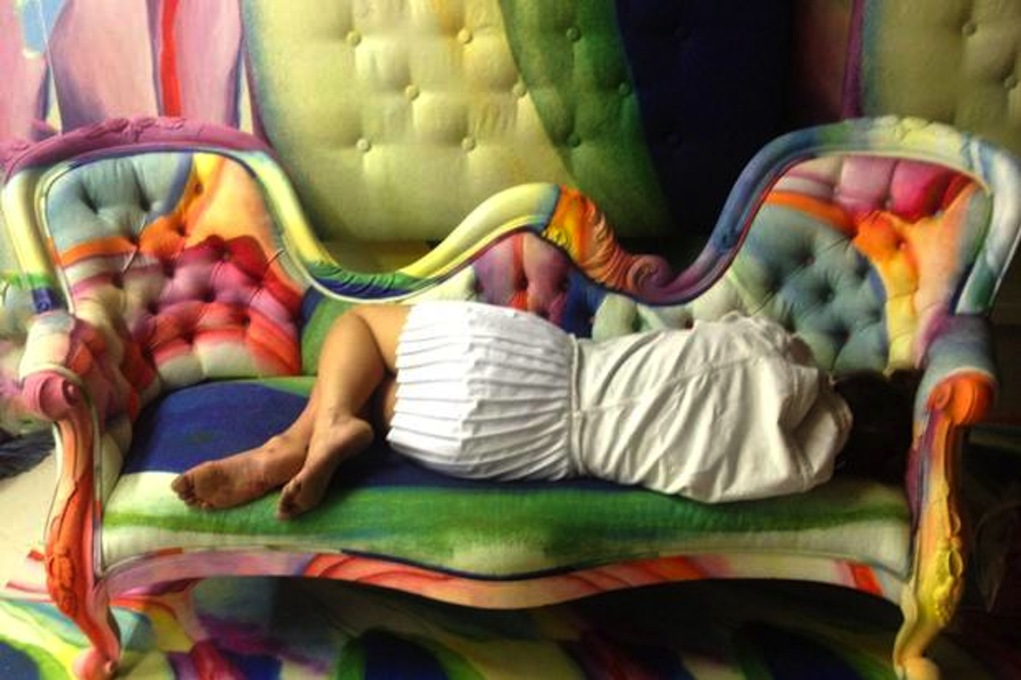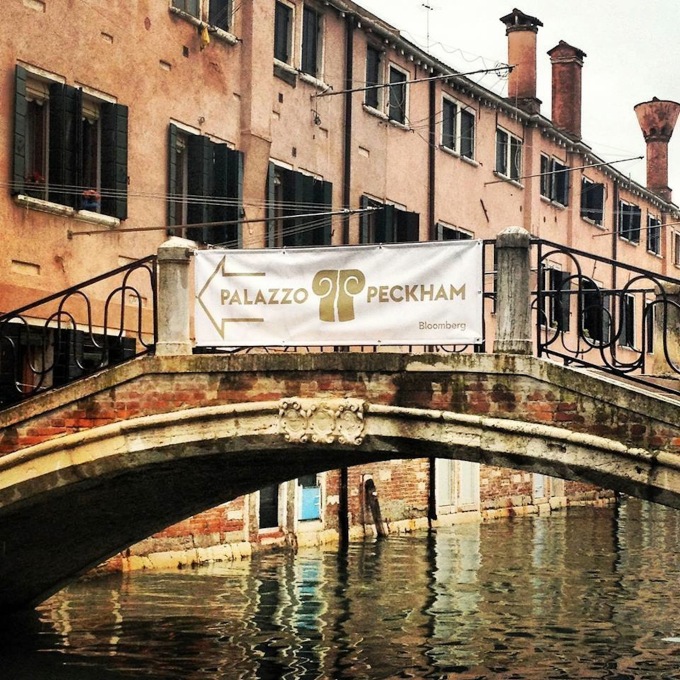Scouting out this year’s Venice Biennale, I followed an irregular, looping route – a far cry from the choreographed march around the Giardini that begins and ends with the France/UK/Germany trifecta. I didn’t choose a meandering course because the lines to enter the big-shot pavilions were so long, but because more national pavilions than ever occupy buildings and structures outside the main exhibition spaces. This is one aspect of this year’s Biennale that lives up to the sprawling Encyclopedic Palace theme of curator Massimiliano Gioni, and its explicit goal to incorporate viewpoints outside the “mainstream.”
Setting up shop in mobile vehicles or parasitically attaching to existing structures, a few national, cross-national, and extra-national spaces have invented ways to move away from the still-life tableaux of national representation inherent in the biennale’s structure; less time spent flag-waving and more time trying programmatic experiments – performances, spontaneous events, and parties. Compared to the participatory action in these sanctioned off-sites, the hyped swap of the French and German Pavilions appears more a dated, superficial gesture than an provocative or subversive one.
Invented pavilions are places to invent conversations. Critical conversations, multi-lingual conversations, drunk conversations... if you’re down for real-talk, go find one of these four pavilions hiding in plain sight.
Cypriot and Lithuanian Pavilion: oO
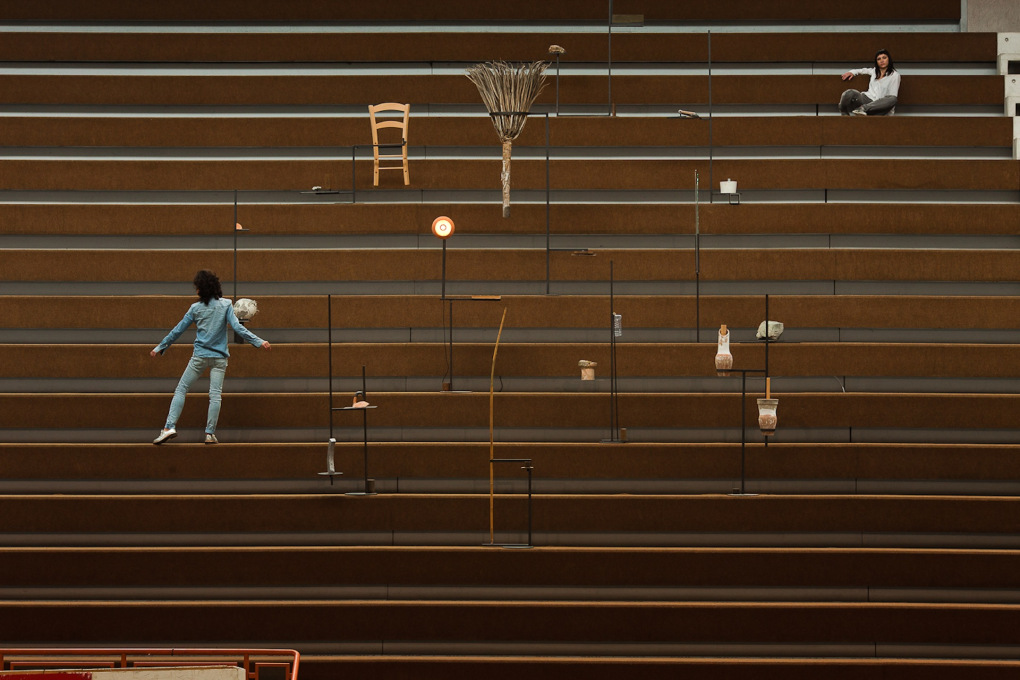
Described by Lithuanian curator Raimundas Malašauskas as “a slightly asymmetrical structure conveying uneven, yet mutually open elements,” this mashup exhibition with the enigmatic title oO combines Cyprus and Lithuania into one mega-pavilion. It takes place in the Palasport Arsenale, Venice’s premier sports venue, with 16 artists’ work scattered throughout the cavernous building. The main-floor basketball court is the show’s focal point, with an installation by Gabriel Lester serving as the scenography for a program of performances throughout the summer. Lester’s installation, titled Cousins, is a maze-like arrangement of sections of drywall extracted from big-name cultural institutions across Europe, like the Van Gogh Museum and WIELS. The pavilion abounds with gestures like these: tongue-in-cheek flirtations with received notions of institutional/national legitimacy and twisted reflections on geographic marginalization. The sports arena is a perfect back-stage window to the Biennale, a free-form counterpart to the stiff institutional calisthenics of the Giardini and Arsenale. The scoreboard in the gymnasium (a work by Dexter Sinister) reads “oo00” – not a double loss in this case, but a double win: the jury awarded oO a Special Mention for National Participation.
Georgian Pavilion: Kamikaze Loggia
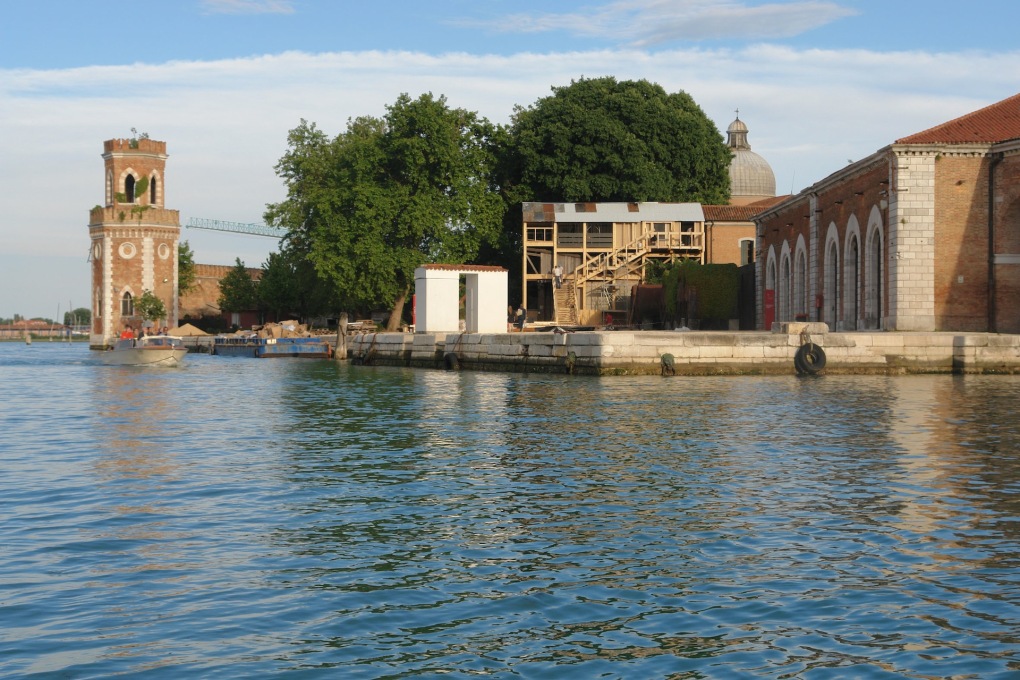
“Kamikaze loggia” is a type of vernacular architecture widespread in Georgia’s capital city of Tbilisi: ramshackle extensions tacked onto existing Soviet modernist apartment buildings, added by residents to increase living space. Their nickname “kamikaze,” is a pun reflecting both their daredevil construction and uniquely Georgian character, as traditional Georgian surnames end in “-adze.”
Documenting and embodying “informality, bottom-up solutions, and the concept of self-organization in Georgian art and architecture,” (in the words of very-talented curator Joanna Warsza), Georgia’s pavilion is indeed built kamikaze-style – it’s a rickety-looking wooden structure on stilts leaning against an old building behind the Arsenale, holding site-specific works and texts by artists including sculptor Thea Djordjadze. The surrounding space was activated during preview days with a stream of performances by participating artists, such as the Bouillon Group’s daily Religious Aerobics, acting out gestures of prayer from the world’s major religions. As with oO, it could be concluded that staking a claim on space (cultural, physical, bienni-al) is a seriously athletic endeavor.
The Maldives Exodus Caravan Show
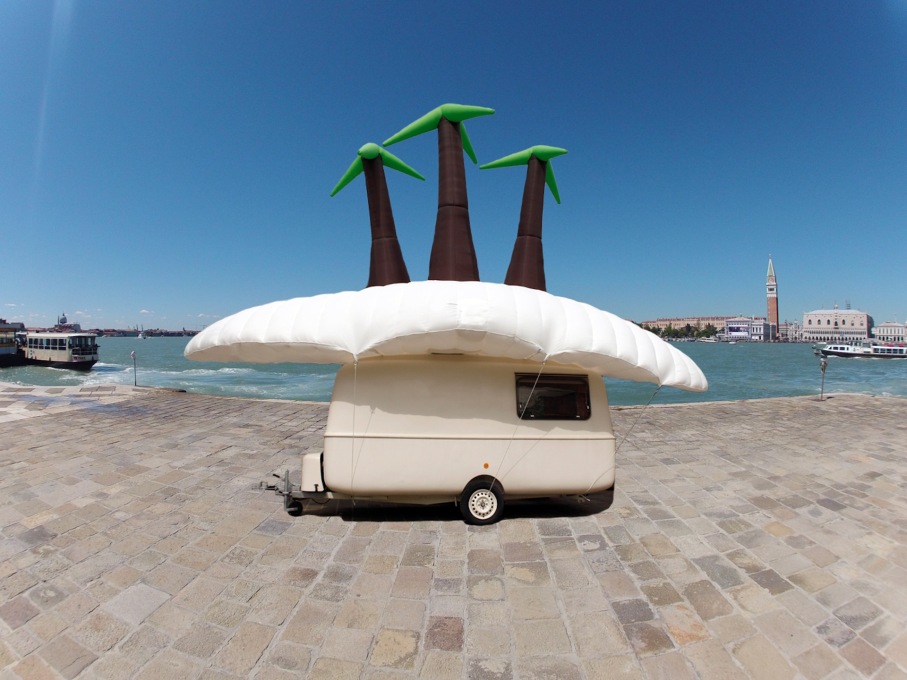
The Maldives: beach paradise. An international tourist destination known for its white sandy beaches, coral reefs, and high-class resorts. Yet behind the tourist ads lie complex and harrowing political and environmental situations, marked by an increasingly stringent dictatorship, rising political tensions, and rising water levels (which, left unchecked, will likely swallow most of the Maldives’ land mass by 2080).
Danish artist/curator Soren Dahlgaard was commissioned by the Maldives’ formerly democratic government to organize its national pavilion. However, following a political coup in early 2012, the new dictatorial regime became increasingly involved in the project, so Dahlgaard decided to split from the official program. Enter The Maldives Exodus Caravan Show: a mobile vehicle for manifold projects surrounding the topics of climate change and human rights, with a wide range of programming – film screenings, lectures, tv broadcasts – expressing solidarity with the large group of Maldivians who reject the dictatorship. Dahlgaard remarks on the decision to forge a Maldives non-pavilion: “we were aware that ‘non-official’ might be interpreted as ‘oppositional.’” Yep. It could.
Palazzo Peckham
Peckham, a district in southeast London, is not exactly a nation. Its population of 11,381 is dwarfed even by the tiny Maldives’ 328,536. So the existence of Palazzo Peckham at this year’s Biennale could seem questionable – even suggestive of the disproportionate geography of the art world – yet it’s clear upon stepping into the former boat house that this isn’t a Peckham-centric spot. Quite the opposite: it houses a solid segment of young creative class posse from around the world. Artists like Dora Budor (Croatia), Joe Hamilton (Australia), and Jon Rafman (Canada) have decked out its interior to create a series of groovy/futuristic (if sweaty) rooms. The participants have planned a long roster of talks, powerpoint presentations, music sets, and late nights, which run through 9 June. Some will be broadcast online for those of you stuck in actual Peckham.
Initiated by Peckham-based gallerist/dealer Hannah Barry with a group of collaborators (including Ollie Hogan, Ross Chalmers, Taki Shiomitsu, and American Medium) and funded by Bloomberg (!), the Palazzo is billed as somewhere to “recuperate” from the Biennale storm. Yes: you will feel better in this dank spa. Spend an hour there, and you might order food from a waiter wearing an armpit-less uniform (by fashion label Eckhaus Latta), you might be offered bootleg grappa by an unknown Swedish guy, or you might pass out in the corner. And you will probably also have a conversation with someone you, well, actually want to have a conversation with.
- Elvia Wilk, Venice/Berlin
Websites are off-sites too:
Lithuania/Cyprus: www.oo-oo.co, www.oo-oo.bo
Georgia: www.georgian-pavilion.org
Maldives: www.the-maldives-exodus-caravan-show.com
Peckham: www.palazzopeckham.com




